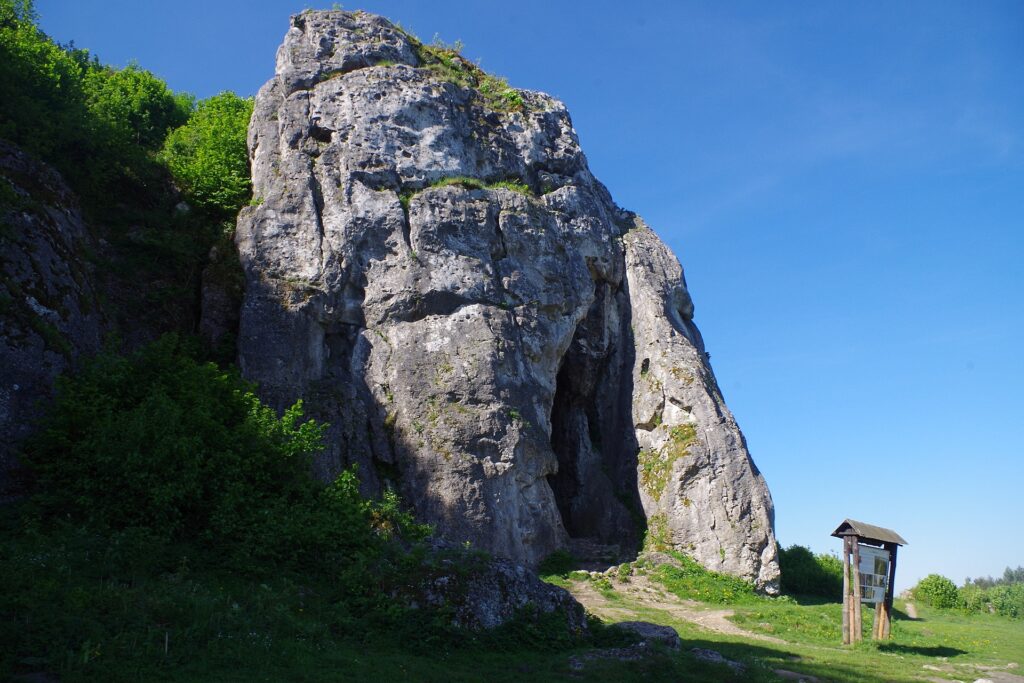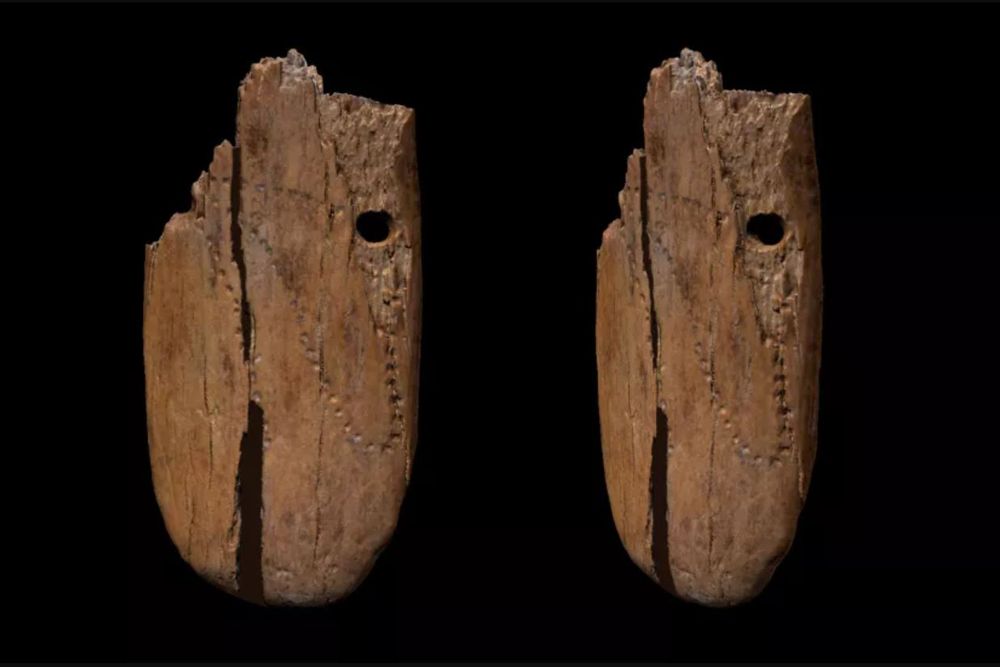Researchers have revealed that a pendant made from mammoth ivory discovered in a cave in southern Poland is the oldest decorated piece of jewellery of its kind ever found on the Eurasian continent.
The team used radiocarbon dating to establish that the jewellery and a tool found nearby are around 41,500 years old. The pendant, featuring decorative dotted lines, was found in 2010 in the Stajnia cave in the Kraków-Częstochowa Upland.
Last year, another international team found that a tooth discovered in the same cave was around 80,000 years old. And research published earlier this year, also based on teeth discovered in the cave, showed that Neanderthals used toothpicks and other forms of oral hygiene there around 46,000 years ago.

Stajnia cave in the Częstochowa-Kraków Upland, where the pendant was found in 2010 (Jerzy Opioła/Wikimedia Commons, under CC BY-SA 4.0)
In the latest research, which was published last week in Scientific Reports, the team sent small extracts of collagen from the pendant and tool – an awl, a pointed implement for piercing holes – to two radiocarbon dating labs.
This method provides an accurate measure of the likely age because both items are both made from material that was once part of living organisms, meaning they contain small amounts of steadily decaying radioactive carbon-14.
Both labs confirmed similar ages for the jewellery of around 41,500 years, meaning that the pendant is the oldest known human-modified punctate ornament found in Eurasia.
Since the radiocarbon dating method only shows the age of the animals whose remains were used rather than when the jewellery and tool were made, the scientists also checked the age of remains found locally. The results were similar, so the ivory and bone must have been fresh at the time.
The find in the Polish cave provides evidence of the cultural innovations introduced by Homo sapiens at the beginning of the Upper Paleolithic, the scientists note.
The pendant is oval-shaped, with two drilled holes and decoration consisting of sequences of at least 50 punctures in an irregular looping curve, the researchers write in their report. Such marks may be hunting tallies, arithmetic counting systems, or lunar notation.
Dating such jewellery is important for understanding human prehistory, they note. When humans began decorating their bodies, this marked “the beginning of ethnolinguistic identity and social complexity in human evolution”.
The finding therefore “plays a unique role in demonstrating the importance of the direct date of an object of Paleolithic art to understand the origin of communication, celebration, and expression of Homo sapiens in Europe”.
Main image credit: Antonino Vazzana/Bones Lab

Ben Koschalka is a translator, lecturer, and senior editor at Notes from Poland. Originally from Britain, he has lived in Kraków since 2005.




















